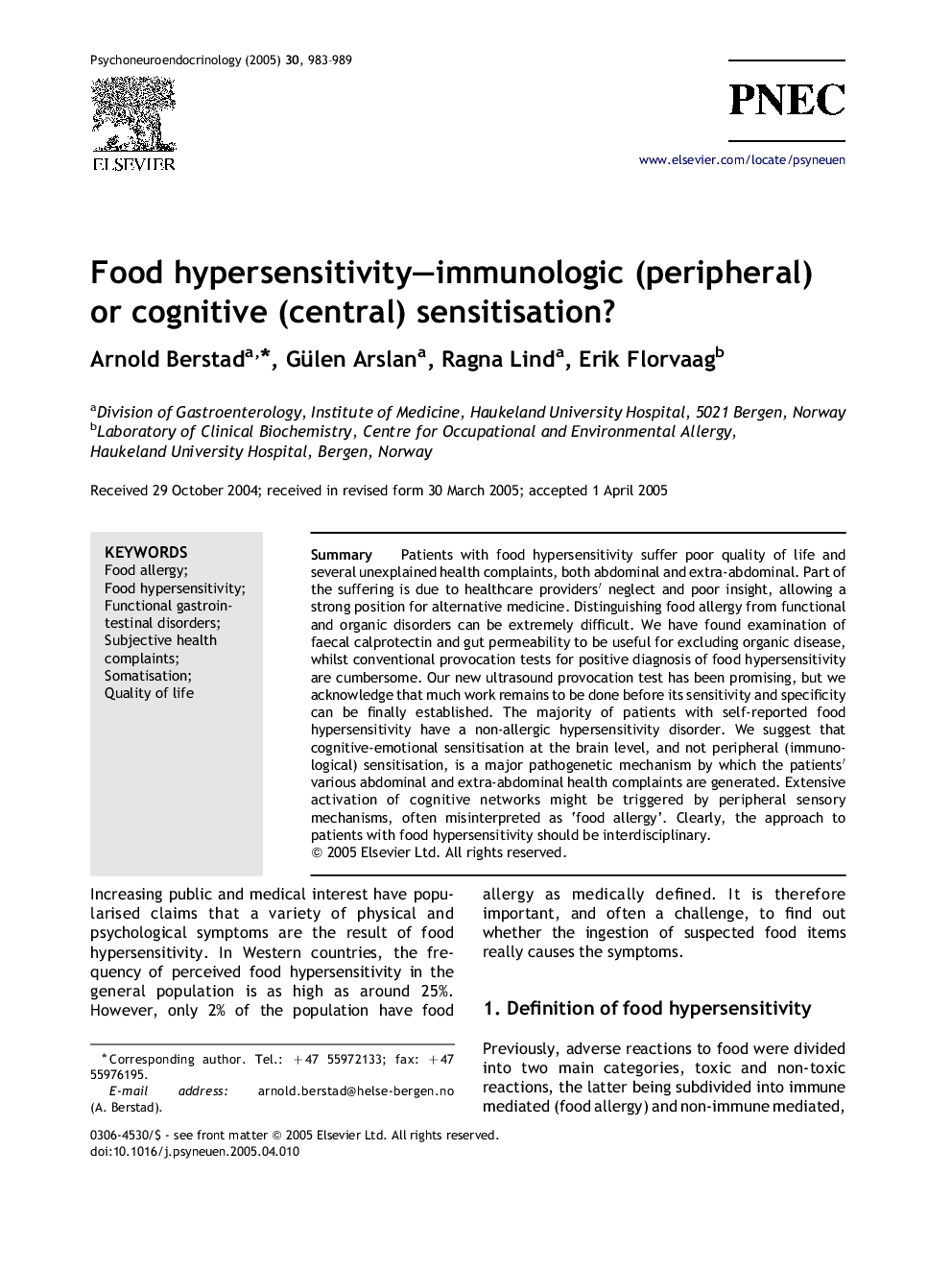| Article ID | Journal | Published Year | Pages | File Type |
|---|---|---|---|---|
| 9646230 | Psychoneuroendocrinology | 2005 | 7 Pages |
Abstract
Patients with food hypersensitivity suffer poor quality of life and several unexplained health complaints, both abdominal and extra-abdominal. Part of the suffering is due to healthcare providersâ² neglect and poor insight, allowing a strong position for alternative medicine. Distinguishing food allergy from functional and organic disorders can be extremely difficult. We have found examination of faecal calprotectin and gut permeability to be useful for excluding organic disease, whilst conventional provocation tests for positive diagnosis of food hypersensitivity are cumbersome. Our new ultrasound provocation test has been promising, but we acknowledge that much work remains to be done before its sensitivity and specificity can be finally established. The majority of patients with self-reported food hypersensitivity have a non-allergic hypersensitivity disorder. We suggest that cognitive-emotional sensitisation at the brain level, and not peripheral (immunological) sensitisation, is a major pathogenetic mechanism by which the patientsâ² various abdominal and extra-abdominal health complaints are generated. Extensive activation of cognitive networks might be triggered by peripheral sensory mechanisms, often misinterpreted as 'food allergy'. Clearly, the approach to patients with food hypersensitivity should be interdisciplinary.
Keywords
Related Topics
Life Sciences
Biochemistry, Genetics and Molecular Biology
Endocrinology
Authors
Arnold Berstad, Gülen Arslan, Ragna Lind, Erik Florvaag,
